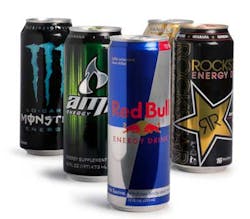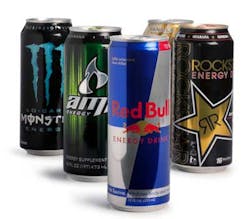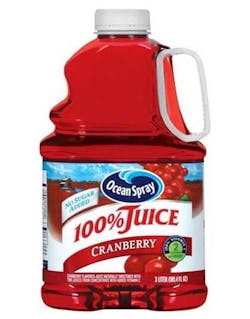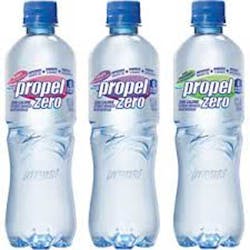Low pH, soft drinks, decay, and obesity
Soft drinks and energy drinks continue to command headlines. The diets of Americans are poor – we eat 22.7 tablespoons of sugar per day, and 51 lbs. of high fructose corn syrup per year, the highest consumption in the world. Medication-induced salivary gland hypofunction also contributes to poor oral health, with 70% of Americans taking at least one medication, >50% take two or more, and 20% take five or more. We will discuss these issues as they relate to dental decay, low pH and erosion, and obesity.
The data about soft drinks contributing to dental decay is relatively strong, and there is some evidence suggesting that sugary sports drinks are also a factor.(1,2) Research to date has not shown an association between 100% juice and obesity.(3) Also, a number of studies show no association between drinking 100% fruit juice and early childhood caries (ECC). One study observed that this association is more in line with poverty and race/ethnicity among U.S. preschool children.(4) The authors investigated data from the 1999 through 2004 National Health and Nutrition Examination Survey (NHANES) for 2,290 children ages 2 through 5. The outcome suggested that, regardless of socioeconomic background – even among children drinking more than the maximum four to six ounces a day of 100% fruit juice recommended by the American Academy of Pediatrics – 100% juice is not associated with ECC.
High soft drink consumption was related to poor oral health and an unhealthy lifestyle.(2) Dental erosion and DMFT/DMFS (18- to 19-year-old groups) were significantly higher in the high consumption groups. Prognostic variables for high consumption of carbonated soft drinks were being male, unhealthy dietary habits, reduced physical activity, high body mass index (BMI), and long periods of time spent in front of the TV or computer.
Oral pH and saliva are closely related. There are a variety of conditions that can cause a low pH. They are medications, cancer treatment such as radiation and/or chemotherapy, Sjogren’s Syndrome or other autoimmune diseases, diseases such as HIV, metabolic disturbances, stress and depression, AIDS or diabetes, physiological blockage of salivary gland ducts, inadequate hydration and dehydration, dietary and environmental exposure, acidic foods and beverages such as sodas and sports/energy drinks, and bottled water.
Yes, bottled water! Some bottled waters are basic, some are neutral, and some are actually acidic. For a list of bottled water and pH, visit the websites cited in References 5 and 6.(5,6) As the bacterial components of the biofilm begin to shift from a healthy flora to an acidogenic and aciduric bacterial flora, the oral pH decreases, which leads to greater demineralization and destruction of tooth structure. The critical oral pH is 5.5. Above pH 5.5 and the process is slow and may be easily reversed. Below pH 5.5 and the process is increasingly fast and logarithmically destructive.(7)
We must keep in mind that numerous genes are associated with dental caries. A significant genetic association exists between dental caries of the anterior mandibular teeth and LYZL2, which codes a bacteriolytic agent thought to be involved in host defense. A significant genetic association exists between caries of the mid-dentition tooth surfaces and AJAP1, a gene possibly involved in tooth development.(9) Risk assessment and nutritional counseling are imperative to keep patients healthy. Encouraging good oral hygiene and dietary habits, and recommending products such as over-the-counter (OTC) fluoride toothpastes, rinses, and gels, are important to prevent decay. Prescription fluoride toothpastes, rinses, gels, and antimicrobial rinses are also helpful. Being aware of bacteria levels, dietary components and frequency, acidic foods or other sources of acid, and salivary dysfunction is critical. Using a system such as Caries Management by Risk Assessment (CAMBRA) is very helpful in managing patients.
Maria Perno Goldie, RDH, MS, is the editorial director of RDH eVillage FOCUS.
References
1. Buyer DM. Are you drinking your teeth away? How soda and sports drinks dissolve enamel. J Indiana Dent Assoc. 2009 Summer; 88 (2):11-3.
2. Hasselkvist A, Johansson A, Johansson AK. Association between soft drink consumption, oral health and some lifestyle factors in Swedish adolescents. Acta Odontol Scand. 2014 Nov; 72(8):1039-46. Epub 2014 Sep 3.
3. O'Neil CE, Nicklas TA, Kleinman R. Relationship between 100% juice consumption and nutrient intake and weight of adolescents. Am J Health Promot. 2010 Mar-Apr;24 (4):231-7.
4. Vargas CM, Dye BA, Kolasny CR, et al. Early childhood caries and intake of 100 percent fruit juice: Data from NHANES, 1999-2004. JADA 2014; 145(12):1254-1261.
5. http://phconnection.com/Bottled_Water_pH_List.html.
6. http://alkalifeten.com/is-your-bottled-water-acidic-neutral-or-alkaline/.
7. Featherstone JDB. The science and practice of caries prevention, JADA Vol 131(7), July 2000, pp. 887-899.
8. Maeda Y, Yang TC, Miyanaga H, et al. Mouthguard and sports drinks on tooth surface pH. Int J Sports Med. 2014 Sep;35(10):871-3. doi: 10.1055/s-0033-1364021. Epub 2014 Mar 6.
9. Shaffer JR, et al. GWAS of dental caries patterns in the permanent dentition, Dent Res 92(1), Jan. 2013.




